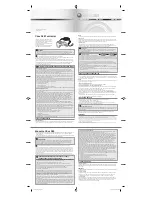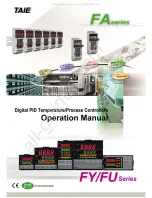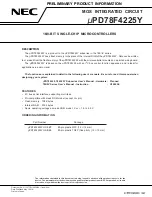
Br-EFB Overview
The Br-EFB is effectively the combination of a DAC-Quad and analog PID-quad
board. Since it is an all-digital board, there are no potentiometers to adjust, and the
PID loop is much more 'intelligent'. It is able to adjust itself, sense error conditions and
compensate for changing loads.
Like most other GilderGear, the Br-EFB can be run as a stand-alone controller, or
networked together with other GilderGear and third party gear as either a DMX-512
'Master' to control hundreds of other actuators, lighting and effects, or as a DMX-512
'slave' to be among the controlled.
The Br-EFB has separate terminals for a full 512 channel universe of DMX-512 in
and 'thru' for daisy changing multiple Br-EFBs and other gear together using standard
CAT5 (or better) ethernet cables. The pinout of these connectors follows the USITT
standard. As with all GilderGear, checksums can be embedded in the DMX-512 data
to keep the Br-EFB, (or the gear that it is controlling through the DMX-512 output),
from updating on any DMX-512 packets that contain corrupted data.
For storing shows, the Br-EFB uses any micro Sd, micro SdHC or micro SdXC
flash cards. These can potentially hold years worth of shows!
Shows can be started using the two 'trigger' inputs, the USB port, the ethernet port,
or the RS-422 serial port. Shows can also be set to start playing when the Br-EFB is
powered up.
The Br-EFB keeps log and configuration files on the µSd card, so even if you don't
need to store show date, you should always have a µSd card inserted into the Br-EFB.
If you ever need to replace a Br-EFB with a new one, transferring the µSd card from
the old unit to the new one will transfer all the shows and settings to the new Br-EFB.
No additional configuration or adjustments should be needed.
For triggering shows and other actions, there are two optically isolated
non-polarized 'trigger' inputs imaginatively labeled 'A' and 'B'. These will accept any
DC voltage between 5 vdc and 24 vdc. Because they are non-polarized, you can't wire
them backwards. Either way you apply the voltage, they will accept it. What you want
these inputs to do is configured when you are saving the AutoDownload file that holds
the show data. Different actions can be configured for the 'closing' edge (when a
voltage is applied to the trigger input) or the 'opening' edge (when voltage stops
flowing through the trigger input).
There is also third optically isolated 'External Output Enable' input. Until 5 vdc to 24
vdc is applied to this terminal, all four servo loops are disabled, and the 'valve' outputs
are physically connected through electromechanical relays to the Br-EFB's 'battery'
Gilderfluke & Co.• 205 South Flower Street • Burbank, California 91502 • 818/840-9484 • 800/776-5972 • fax 818/840-9485
Br-EFB Manual / May 22, 2018 3:28 PM / page 11 of 142












































